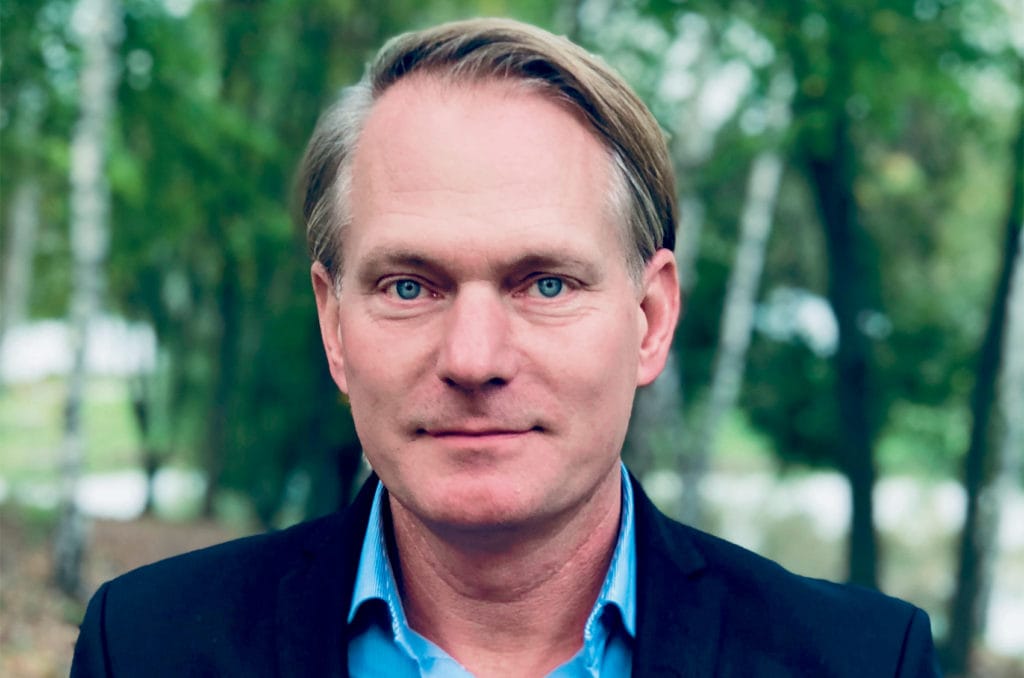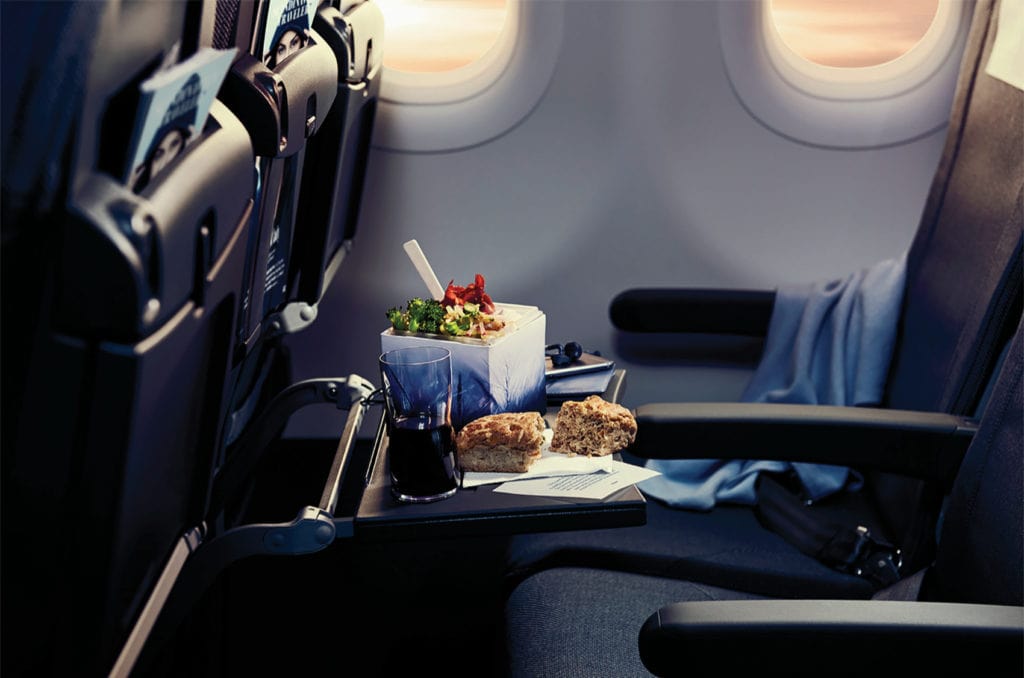Rooting for a Cause: SAS Puts Sustainability at the Forefront of Cabin Experience
Share

SAS trialed a vegan dish as part of its New Nordic by SAS in-flight menu last year. What influenced the decision?
There’s an increasing interest from our customer base, and from society in general, in a more plant-based diet with less animal proteins. Since sustainability is a main focus for SAS, I think the discussion around how we can use diet to reduce carbon emissions is super important.
Describe the vegan dish that was introduced. What local, seasonal ingredients were used?
We put a lot of thought into our dish. We ended up with thyme-roasted Hällestad mushrooms with a lentil and beet-flavored wheat salad tossed with tarragon and black beans from Öland, along with hummus made of yellow Vretärt peas from Bjälösa and sliced golden beetroot, served with parsley vinaigrette and vinegar-roasted buckwheat.
“Working with raw ingredients that are steeped in Nordic tradition requires more skill, and it generates much more pride in what we do.”
During the two-week trial, you used two tons of mixed mushrooms. How did you make sure local suppliers could meet the demand?
The mushrooms were handpicked in Skåne in the south of Sweden from a 100 percent organic producer, so the trick for us was working with smaller batches on smaller runs and working very closely with not only the producer of the mushrooms, but also the company making the meals for us. The meal planners within our department who are responsible for the details also did great work establishing relationships with our suppliers.
How do locally sourced in-flight meals change the supply chain?
If we import a lot of raw materials, which was the case years ago, there are transportation issues, quality issues and a number of other issues we want to avoid. So instead of transporting fresh and frozen items, we work with a greater focus on having locally sourced fresh food and fresh ingredients. The meals we’re talking about are never frozen; they’re only chilled. It’s a very short lead time from the farm to production, and then they’re served to the customers. It works almost like a restaurant.

How are you applying sustainable thinking to other elements of your menu?
Everything we serve on board is there for a reason – our sustainable thinking doesn’t just apply to the main meals served in our SAS Cube packaging. For example, our Larssons potato chips are supplied by seventh-generation Swedish farmers. They manage the entire production process, from cultivating the raw materials to growing the potatoes, manufacturing the chips and packaging them at their factory in Larsviken. They choose the best types of potatoes for each season and detail which kind have been used on the packet.
What’s the biggest change you’ve seen since introducing the New Nordic by SAS in-flight menu?
When we started, we planned for scheduled meal changes but soon discovered that locally sourced ingredients and “seasonal thinking” mean we can be even more agile, so you will see us making more frequent changes. Working with raw ingredients that are steeped in Nordic tradition and heritage requires much more skill and competency, and it generates much more pride in what we do. It takes a bit more work, but I would say it’s worth it every day of the week.

SUSTAINABILITY IS IN THE DETAILS
Last year, SAS introduced a business-class amenity kit on board flights between Scandinavia and the US or Asia, featuring products designed with sustainability in mind:
- Toothbrush with cornstarch handle from The Humble Co.
- SLS-free toothpaste with tube made from recycled materials, also from The Humble Co.
- Socks from Swedish Stockings made from a by-product of other nylon products
- Lip balm and skin cream from Verso, free from color additives, parabens and mineral oil
“Rooting for a Cause” was originally published in the April/May issue of Higher Hospitality.


